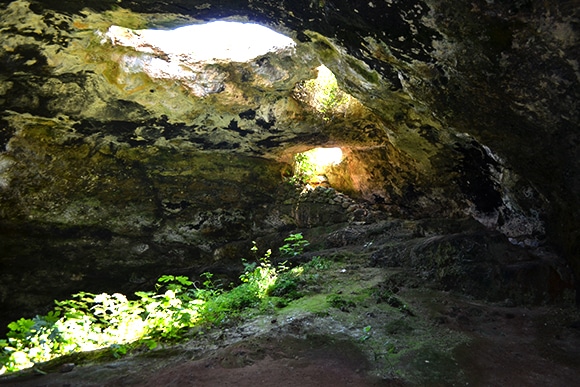
Chousti Cave
“Chousti” is a 35 by 20 meter single room cave, on two levels, without stalactites or stalagmites. Its impressive entrance is leading to steps carved in the rock, and a niche on the right side. At the base of the niche one can see a fossilized seashell that has been placed there from ancient times, which may be an ancient representation of Aphrodite (and her “ancestor” Astarte) emerging from a seashell. The ancient goddess was possibly worshiped in the cave.
During the summer of 1998 a series of excavation work was initiated and lasted several years, bringing to light important findings, such as ceramic sherds of the Neolithic and Early Helladic period (5000 – 2200 BC), the Archaic to the roman periods, but also of the post-Byzantine period. The presence of red or black painted votive vases dating back to the classical period, amphorae as well as a column confirm that the cave was used as a worship site at the time. Part of an inscription on a clay tablet, dedicated to the goddess, dating back to 4th century BC was also found during the excavation. This clay tablet was used by a student learning to write, which is testimony to an organized school system on the island in the 4th century BC.
On the outside, to the north, a sacred space can be seen with an outdoor, probably rural, sanctuary sculpted in the rock, with niches, used for offerings and libations. A building belonging to the Early Helladic II period was also excavated, although the site was apparently not inhabited in the later prehistoric period.
Access to the cave entrance is dangerous as it is barely visible, so one must proceed carefully when entering the site.

Leave your comment
You must be logged in to post a comment.